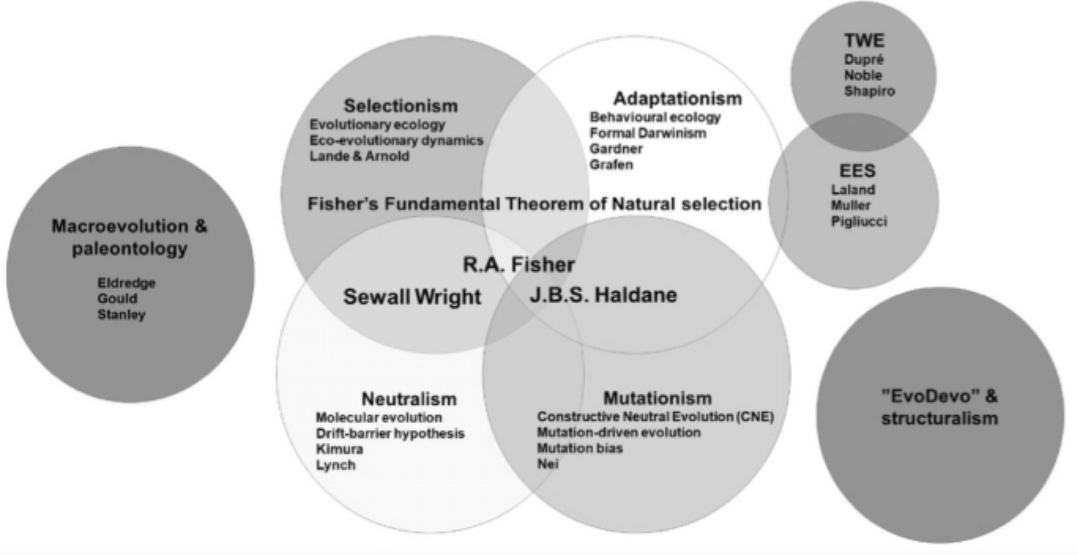Reciprocal Causation and Biological Practice: A Critical Examination
The "Extended Evolutionary Synthesis" (EES) has emerged as a significant contender to the "Modern Synthesis" (MS), the prevailing framework in evolutionary biology. A cornerstone of the EES is the concept of "reciprocal causation," which posits a dynamic, two-way interaction between evolutionary factors, challenging the traditionally unidirectional view of causation inherent in the MS. The journal article "Reciprocal causation and biological practice" delves into the arguments surrounding this concept, exploring its implications for scientific modeling, representation of biological reality, and explanatory power.
Proponents of the EES argue that reciprocal causation offers a more accurate depiction of evolutionary processes. They contend that the MS, with its emphasis on genes as primary drivers and environment as a selective force, overlooks the complex interplay between organisms and their environments. Reciprocal causation, on the other hand, highlights the active role of organisms in shaping their own evolution through processes like niche construction, developmental plasticity, and cultural inheritance.
A primary argument presented in the article is that incorporating reciprocal causation leads to the development of superior scientific models. By acknowledging the feedback loops and interdependencies within biological systems, these models are believed to offer enhanced predictive power. For instance, considering how organisms modify their environments through niche construction can improve predictions about species distribution and ecosystem dynamics.
Similarly, understanding the influence of developmental plasticity on evolutionary trajectories can provide insights into rapid adaptation to environmental changes.
Furthermore, proponents assert that reciprocal causation offers a more faithful representation of the causal structure of the biological world. The MS, with its focus on linear, gene-centric causality, is seen as an oversimplification of the intricate networks of interactions that characterize living systems. Reciprocal causation, by contrast, acknowledges the inherent dynamism and complexity of these systems, recognizing that cause and effect are often intertwined and mutually reinforcing.
The article emphasizes the empirical and explanatory advantages of reciprocal causation compared to competing causal frameworks. It highlights the ability of the EES to account for phenomena that are difficult to explain within the MS framework, such as the rapid evolution of antibiotic resistance, the role of epigenetic inheritance in transgenerational adaptation, and the influence of cultural transmission on human evolution.
Moreover, the article points to the growing consensus among biologists that the causal framework of the EES more accurately reflects the structure of the biological world. This consensus is often based on the increasing body of empirical evidence supporting the importance of reciprocal causation in various biological processes. Studies on niche construction, for example, demonstrate how organisms actively modify their environments, influencing selective pressures and shaping their own evolutionary trajectories. Similarly, research on developmental plasticity reveals how environmental cues can trigger epigenetic changes that alter gene expression and influence phenotypic variation.
However, the adoption of reciprocal causation is not without its challenges. Critics argue that it can lead to overly complex models that are difficult to test and parameterize. They also express concerns about the potential for circular reasoning, where cause and effect become indistinguishable. Moreover, some argue that the emphasis on reciprocal causation may detract from the importance of genetic factors, which remain central to evolutionary processes.
Despite these criticisms, the article suggests that the concept of reciprocal causation offers a valuable framework for advancing our understanding of evolution. It encourages a shift from a linear, gene-centric view to a more holistic and dynamic perspective that acknowledges the interconnectedness of biological systems. By incorporating reciprocal causation into evolutionary models, researchers can gain a more comprehensive and accurate picture of the complex processes that drive evolutionary change.
In conclusion, "Reciprocal causation and biological practice" underscores the growing recognition of the concept of reciprocal causation within the EES. The article highlights the potential of this framework to improve scientific models, enhance our understanding of biological reality, and provide more comprehensive explanations of evolutionary phenomena. While challenges remain, the increasing body of empirical evidence and the growing consensus among biologists suggest that reciprocal causation is a valuable tool for advancing evolutionary biology.






Comments
Post a Comment